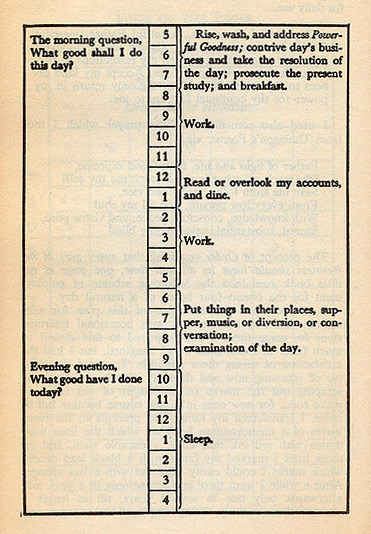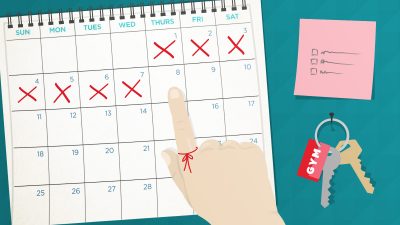 I’m a huge fan of the concept of “strategic renewal.” Chasing shiny opportunities, working in a reactive state and dealing with each new email that pops up on your phone is not only exhausting – it’s a way to ensure you get nothing done – and it’s simply not sustainable.
I’m a huge fan of the concept of “strategic renewal.” Chasing shiny opportunities, working in a reactive state and dealing with each new email that pops up on your phone is not only exhausting – it’s a way to ensure you get nothing done – and it’s simply not sustainable.
“Busy” isn’t success. It’s a lack of priority.
I’ve been paying attention to those who have command of their time…systems that bring sanity and purpose to a hectic travel and work schedule. I fly about 150,000 miles a year, at minimum, so keeping myself healthy and productive in the midst of constant movement is essential to being an effective creator. For the first 25 years of my life I resisted “systems” and plans with every fiber in my body because I thought it meant the man was keeping me down. But now, FLEXIBLE routines for exercise, meditation, renewal, creative expression ARE key essential parts to my success. My writer friend Ben has been developing his own system of strategic renewal for years – which is very much in line with my own (see my post here) – and I asked him to share it for our benefit today. Take it away Ben. -Chase
Thanks Chase. I work from home like many of the creatives reading this piece, so right away, we’re in cahoots. While the home office / studio environment is filled with distractions — dirty dishes, laundry, an un-made bed, the un-vacuumed carpet and myriad other 10-minute chores that call out like a siren each and every minute of the telecommuter’s working day, I’d rather create a plan that kept me away from those pesky distractions than be trapped in a soul sucking job, under the soul-sucking glow of fluorescents, surrounded by employees who worked by an unwritten company rule that more is more. Arrive early, leave late. Rinse, wash, repeat. Scratch that. Despite being chained to a chair for 12 hours a day — our peers in those role are NOT more productive than we are. Here’s why.
Chase and I have both recently read an article by Tony Schwarz in the New York Times about a what researches are calling “strategic renewal” and its impact on productivity. According to Schwarz, strategic renewal is vital to staying productive. The concept includes activities like:
daytime workouts, short afternoon naps, longer sleep hours, more time away from the office and longer, more frequent vacations…boosts productivity, job performance and, of course, health.
The theory boils down to the fact that we can’t increase the hours in the day, but we can increase the energy with which we make the most of those hours. Taking short, scheduled breaks throughout the day rejuvenates and restores us physically and mentally, helping us plow through those assignments and to-do lists in a third of the time.
The coolest take away from the article concerns what I now call “work blocks.” In short, after that 90 minutes of work, our bodies and minds need a break. But our 9-5 (or 7-7) work culture demands focus for much, much longer blocks of time, so many of us fight that urge to break by filling up the mug with more coffee, rubbing our eyes and refocusing on the screen.
No more.
Inspired by Schwarz and the studies he cited, I created a Daily Schedule that broke up my day into 90-minute Work Blocks, separated by 30 minute Breaks and, in the middle of my day, a 2-hour lunch. I know some of you just spit your coffee out. But you read that right. I take a 2 hour lunch to get a long run or workout in, eat and read from a book or write a few lines in my journal.
During the 30 minute breaks I read, clean, walk to the post office and complete those little, once distracting tasks that now actually kill two birds with one stone. Sometimes, if I didn’t get enough sleep the night before, I’ll even knock off for a cat nap.
Here’s a snapshot of my day, which I have printed out and laminated so I can use a dry-erase marker for daily tasks and to-dos:
I schedule a total of four 90-minute work blocks in my day. Since implementing my Daily Schedule, I find that my productivity is nearly 4x what it was before, especially when I stay disciplined and, most importantly, when I get a full night’s sleep. [Which, for me, is at least 7 1/2 hours.] When you step back from it, I’m essentially “in the office” for 9 hours a day, from 7:30 – 4:30 (I’ll usually keep plugging until 5, out of respect), but by the time I punch out, I’m no wearier that I was when I punched in and I step away from my desk with a the clear conscience of one who has knocked out some serious work. Even better, I find myself going to bed at night genuinely looking forward to work the next day.
Sure, it’s no Tim Ferriss’ 4-hour Workweek, but it’s working towards it. And it’s respecting my body’s physiological need for regular breaks, a full-night’s sleep and daily physical activity.
So that’s it in a nutshell. I’d write more, but the dryer buzzer just went off.
[I lied. A final word about the two hour lunch, because it sometimes does feel indulgent. As justification, I leave you with the daily schedule of one of America’s most productive men, Benjamin Franklin:]























Awesome post. Super helpful.